The Mariinsky Ballet is the resident classical ballet company of the Mariinsky Theatre in Saint Petersburg, Russia.
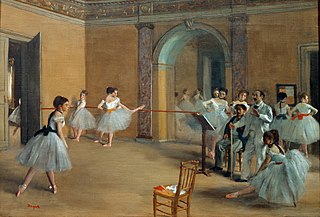
Classical ballet is any of the traditional, formal styles of ballet that exclusively employ classical ballet technique. It is known for its aesthetics and rigorous technique, its flowing, precise movements, and its ethereal qualities.

Marius Ivanovich Petipa, born Victor Marius Alphonse Petipa, was a French and Russian ballet dancer, pedagogue and choreographer. Petipa is one of the most influential ballet masters and choreographers in ballet history.
The Moyglare Stud Stakes is a Group 1 flat horse race in Ireland open to two-year-old thoroughbred fillies. It is run at the Curragh over a distance of 7 furlongs, and it is scheduled to take place each year in late August or early September.

Le Corsaire is a ballet typically presented in three acts, with a libretto originally created by Jules-Henri Vernoy de Saint-Georges loosely based on the poem The Corsair by Lord Byron. Originally choreographed by Joseph Mazilier to the music of Adolphe Adam and other composers, it was first presented by the ballet of the Théâtre Impérial de l’Opéra in Paris on 23 January 1856. All modern productions of Le Corsaire are derived from the revivals staged by the Ballet Master Marius Petipa for the Imperial Ballet of St. Petersburg throughout the mid to late 19th century.
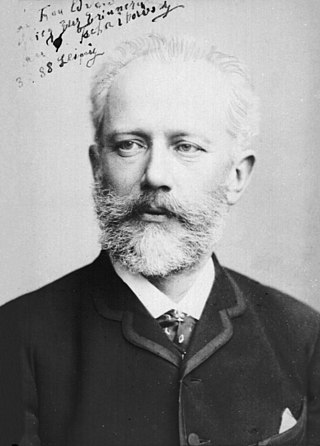
The Sleeping Beauty is a ballet in a prologue and three acts to music by Pyotr Ilyich Tchaikovsky, his Opus 66, completed in 1889. It is the second of his three ballets and, at 160 minutes, his second-longest work in any genre. The original scenario was by Ivan Vsevolozhsky after Perrault's La belle au bois dormant, or The Beauty Sleeping in the Forest; the first choreographer was Marius Petipa. The premiere took place at the Mariinsky Theatre in St. Petersburg on January 15, 1890, and from that year forward The Sleeping Beauty has remained one of the most famous of all ballets.
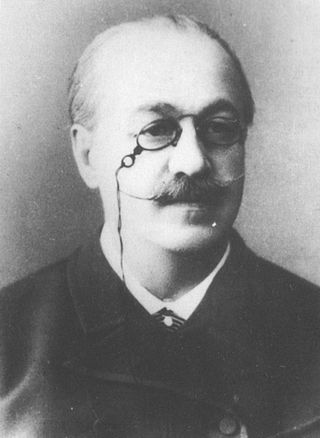
Lev Ivanovich Ivanov was a Russian ballet dancer and choreographer and later, Second Balletmaster of the Imperial Ballet. As a performer with the Imperial Ballet, he achieved prominence after performing as an understudy in a benefit performance of La Fille Mal Gardée. He is most famous as the choreographer of Acts II and IV of Swan Lake, which include the Dance of the Little Swans, Act II of Cinderella, and The Nutcracker, which he choreographed alongside Marius Petipa.
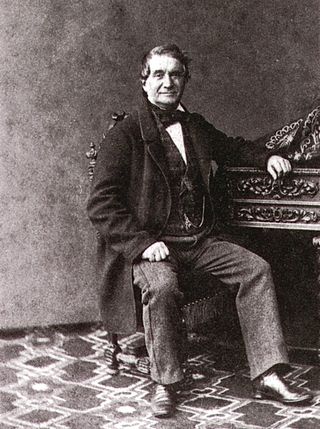
Cesare Pugni was an Italian composer of ballet music, a pianist and a violinist. In his early career he composed operas, symphonies, and various other forms of orchestral music. Pugni is most noted for the ballets he composed for Her Majesty's Theatre in London (1843–1850), and for the Imperial Theatres in St. Petersburg, Russia (1850–1870). The majority of his ballet music was composed for the works of the ballet master Jules Perrot, who mounted nearly every one of his ballets to scores by Pugni. In 1850 Perrot departed London for Russia, having accepted the position of Premier maître de ballet of the St. Petersburg Imperial Theatres at the behest of Carlotta Grisi, who was engaged as Prima ballerina. Cesare Pugni followed Perrot and Grisi to Russia, and remained in the imperial capital even after Grisi's departure in 1853 and Perrot's departure in 1858. Pugni went on to compose for Perrot's successors Arthur Saint-Léon and Marius Petipa, serving as the Imperial Theatre's official composer of ballet music until his death in 1870. He was also the grandfather of Russian painter Ivan Puni, also known as Iwan Puni and Jean Pougny.
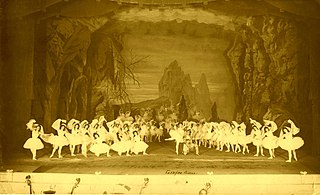
La Bayadère is a ballet, originally staged in four acts and seven tableaux by the French choreographer Marius Petipa to music by Ludwig Minkus and libretto by Sergei Khudekov. The ballet was staged for the benefit performance of the Russian Prima ballerina Ekaterina Vazem, who created the principal role of Nikiya. La Bayadère was first presented by the Imperial Ballet at the Imperial Bolshoi Kamenny Theatre in St. Petersburg, Russia, on 4 February [O.S. 23 January] 1877. From the first performance the ballet was hailed by contemporary critics and audiences as one of the choreographer Petipa's masterpieces, particularly the scene of act II The Kingdom of the Shades, which is one of the most celebrated pieces in all of classical ballet.
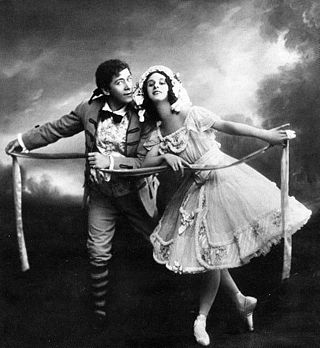
Nikolai Gustavovich Legat was a ballet dancer, choreographer and teacher.
Paquita is a ballet in two acts and three scenes originally choreographed by Joseph Mazilier to music by Édouard Deldevez and Ludwig Minkus. Paul Foucher received royalties as librettist.
A Marriage During the Regency is a ballet in 2 acts, with libretto and choreography by Marius Petipa and music by Cesare Pugni.
The Parisian Market is a comic ballet in one act, with libretto and choreography by Marius Petipa and music by Cesare Pugni.
The Blue Dahlia is a ballet in two acts, with libretto and choreography by Marius Petipa and music by Cesare Pugni, first presented by the Imperial Ballet on May 12 [O.S. April 30] 1860 at the Imperial Bolshoi Kamenny Theatre in St. Petersburg, Russia, with Mariia Surovshchikova-Petipa and Timofei Stukolkin.
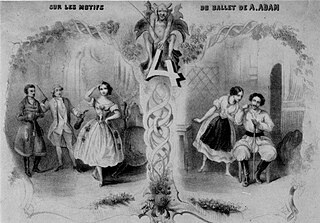
Le Diable à quatre is a ballet in two acts and three scenes, with choreography by Joseph Mazilier, music by Adolphe Adam, and libretto by Adolphe de Leuven, first presented by the Ballet of the Académie Royale de Musique on 11 August 1845, with Carlotta Grisi and Lucien Petipa.

The King's Command is a ballet in 4 Acts-6 Scenes, with choreography by Marius Petipa and music composed by Albert Vizentini.
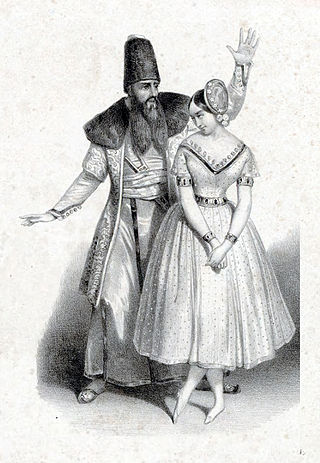
Le Diable amoureux is a ballet-pantomime in three acts and eight scenes, originally choreographed by Joseph Mazilier to the music of Napoléon Henri Reber and François Benoist. The libretto by Jules-Henri Vernoy de Saint-Georges is based on Jacques Cazotte's 1772 occult romance The Devil in Love. The work was first presented by the Ballet of the Royal Academy of Music in Paris on 23 September 1840, with Pauline Leroux, Mazilier, and Louise Fitz-James.
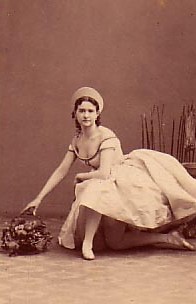
Mariia Sergeyevna Surovshchikova-Petipa was prima ballerina to the St. Petersburg Imperial Theatres and wife of the noted choreographer Marius Petipa.

Alexander Gorsky, a Russian ballet choreographer and a contemporary of Marius Petipa, is known for restaging Petipa's classical ballets such as Swan Lake, Don Quixote, and The Nutcracker. Gorsky "sought greater naturalism, realism, and characterization" in ballet. He valued acting skills over bravura technique. His interpretations of ballets were often controversial and he often used artists outside the dance world to create sets and costumes.

Ludwig Minkus, also known as Léon Fyodorovich Minkus, was an Austrian composer of ballet music, a violinist and teacher of music.














